Who may need a Flexible Cystoscopy
What are the advantages of flexible cystoscopy?
How is flexible cystoscopy performed?
What to expect after flexible cystoscopy
Flexible cystoscopy outcomes
Post-Operative Care Instructions
A Flexible Cystoscopy is a simple procedure that allows your urologist to look inside your urethra
and bladder. A narrow, flexible, fibre-optic telescope (5mm) is passed through the urethra and into
the bladder. Flexible cystoscopy is often performed under light sedation (anaesthetic) but may be
performed simply with local anaesthetic gel inserted into the urethra.
Who may need a Flexible Cystoscopy
There are a number of reasons you may need a flexible cystoscopy. These include:
- Investigating the causes of blood in the urine (haematuria)
- Ongoing surveillance of patients with previous bladder tumour
- Assessing for possible obstruction to urine flow
- To remove a stent previously placed in your ureter
- To biopsy the lining of your bladder
- To investigate other bladder issues
What are the advantages of flexible cystoscopy?
- It is a simple, safe and quick diagnostic procedure that can be performed under light sedation or local anaesthetic
- This is performed as a day procedure
- Provides valuable information about the anatomy of the lower urinary tract to assist in diagnosis and planning treatment for various urinary conditions
How is flexible cystoscopy performed?
- Often performed under light sedation but may be performed with local anaesthetic gel
- The flexible cystoscope is inserted through the urethra opening and into the bladder
- The procedure only takes 5-10 minutes
- Sterile saline fluid is used to fill the bladder during the procedure; you may experience some mild discomfort and sensation of bladder fullness afterwards
- You will need to arrange someone to drive you home after the procedure
What to expect after flexible cystoscopy
- You may have a full bladder and need to go to the toilet after the procedure
- You may experience some burning and stinging when passing urine. This settles over the next couple of days. Ural Sachets (over-the-counter from the chemist) may help with this.
- You may also experience some urinary urgency and frequency which will settle quickly over a few days.
- You may have some blood in your urine for a couple of days which is quite common and will clear up after a day or so
- You can undertake normal activities unless your urologist tells you otherwise
- The findings of the procedure will be discussed with you prior to your discharge and the appropriate follow up made
- Inability to pass urine (urine retention) or symptoms to suggest an infection (fever, chills and general lethargy) are less common following flexible cystoscopy. Your urologist should be notified of these symptoms.
Flexible cystoscopy outcomes
Flexible cystoscopy is a simple, safe and minimally invasive diagnostic procedure. This is one of the most common and informative procedures performed by urologists. It allows for diagnosis of urinary conditions, surveillance of bladder cancer as well as facilitating some other minor interventions (bladder biopsy and removal of ureteric stent). Following a flexible cystoscopy further procedures may be necessary depending upon the findings.
Post-Operative Care Instructions
What to expect:
- During the procedure your bladder will be filled with sterile saline fluid, so you will need to urinate immediately afterward
- Burning and stinging with urination is common for a few days following the procedure. This is due to the irritation of the urethra during the procedure, and not usually indicative of infection, unless you are also unwell
- Blood in the urine is common for a few days following the procedure (this may be intermittent) but may take longer to resolve. You should ensure adequate fluid intake
- Urinary frequency and urgency as well as nocturia (urinating at night time) may be present for a few days.
Return to activity:
- Driving – no driving for 24 hours following surgery if you have had sedation for your procedure
- Work – you may return to work the following day unless otherwise instructed
- Lifting – no restrictions unless your doctor advises otherwise
- Activities – you may participate in your normal activities (including running, swimming, gym, golf, cycling etc) unless otherwise instructed
- Sex – no restrictions unless your doctor advises you otherwise.
Medication and Pain Management:
- You may take Ural (available over the counter at the chemist) to relieve burning and stinging with urination.
Head directly to your nearest hospital emergency room if:
- You are unable to urinate
- Fevers, chills or shakes (may indicate infection).
Follow-Up Information:
Our rooms will contact you within the next 1-2 days to arrange a follow-up appointment with your urologist.
Your follow-up appointment is on: ____________________ at __________________.
Contact Information:
If you have any questions or concerns that are not addressed here or in the procedure information available on our website melbourneurologycentre.com.au contact our rooms on 1300 702 811 or [email protected]
Post-Operative information for this procedure can be found here: Flexible Cystoscopy Post-Operative Care Instructions
Written by Dr. Shekib Shahbaz and Dr. Tony de Sousa
European Association of Urology, (2021), Cystoscopy,[ [https://patients.uroweb.org/tests/cystoscopy/], accessed 28/02/21.
Urology Care Foundation (2021), What is cystoscopy? [ https://www.urologyhealth.org/urology-a-z/c/cystoscopy], accessed 28/02/21.
